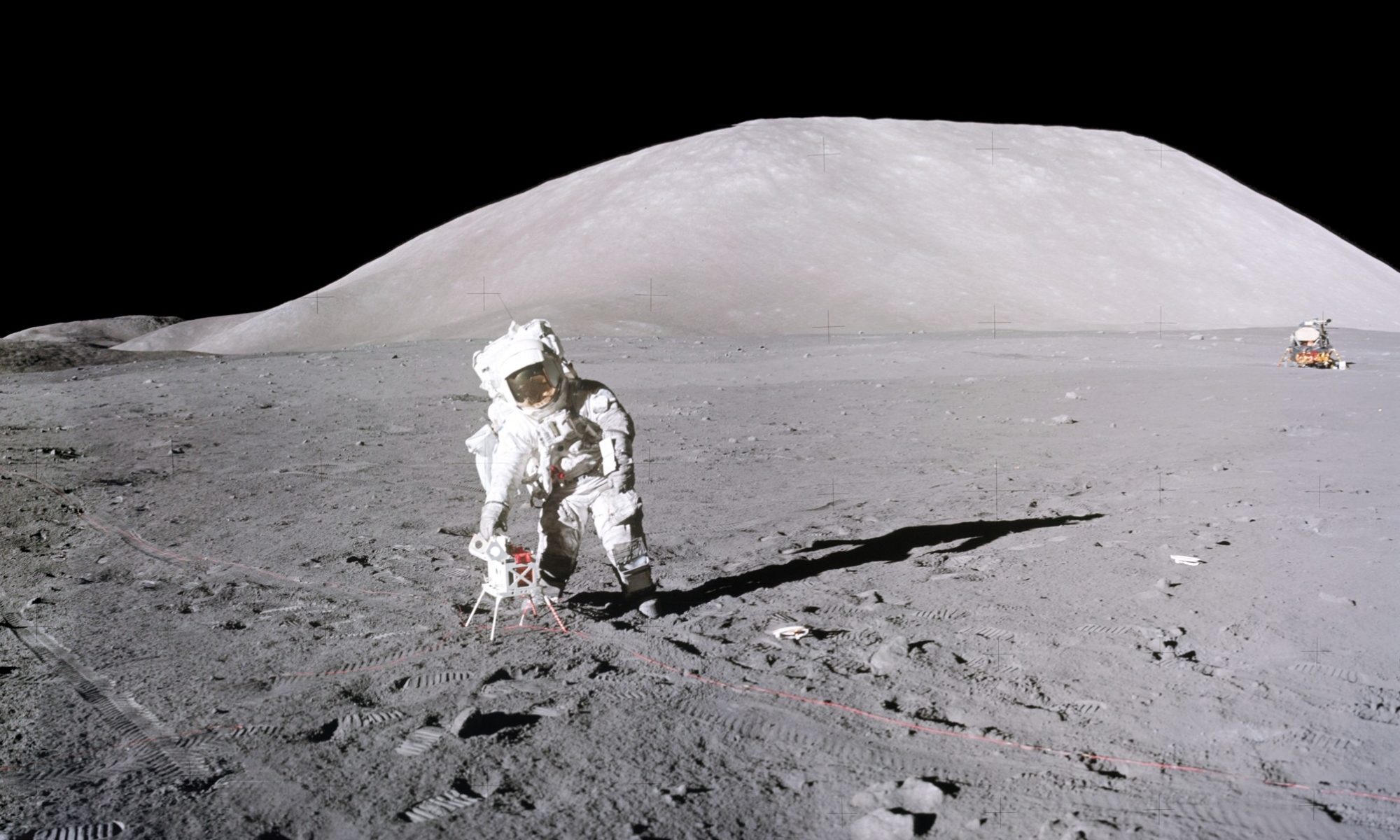 Harrison H. Schmitt on the lecture podium at the 2018 Annual Meeting of the Geological Society of America. (photo by the AUS Editor).
Harrison H. Schmitt on the lecture podium at the 2018 Annual Meeting of the Geological Society of America. (photo by the AUS Editor).
The 2018 Annual Meeting of the Geological Society of America was held on Nov. 4-7 at the Indianapolis Convention Center. A special morning session #166: T145. Apollo 17 Forty-Five Years on: Reanalysis of the Geochemistry, Geophysics, and Field Geology in Light of Data from the Lunar Reconnaissance Orbiter and Other Recent Missions, on Tuesday, 6 November was devoted to the legacy of Apollo 17.
Twelve papers were presented, the last of which was given by Jack Schmitt, entitled “3 Myr Age for Shorty Crater At Taurus-Littrow, Site of Orange and Black Pyroclastic Ash”. He discussed how the orange, red, yellow and black ashes that he discovered and exposed at Shorty Crater had been protected by the overlain ejecta from a much older, nearby crater, which he named “Fitzgibbon”. Using a color-balanced photo provided by AUS Editor Ronald Wells, Schmitt described the origin of the variations in the red and yellow colored material in the Shorty trench. For a PDF of his abstract, click here.
The previous paper at the meeting given by Wells and entitled, “Color-Balancing of In Situ Documentation Photographs of the Apollo 17 Orange and Apollo 15 Green Volcanic Ashes”, demonstrated color-corrected photos of the orange, red and yellow soils at the trench and other Shorty environments. A PDF of this abstract can also be downloaded by clicking here. These photos can be seen in Chapter 11, “It’s Orange” on this website.
Copyright © by Harrison H. Schmitt, 2018. All rights reserved.
